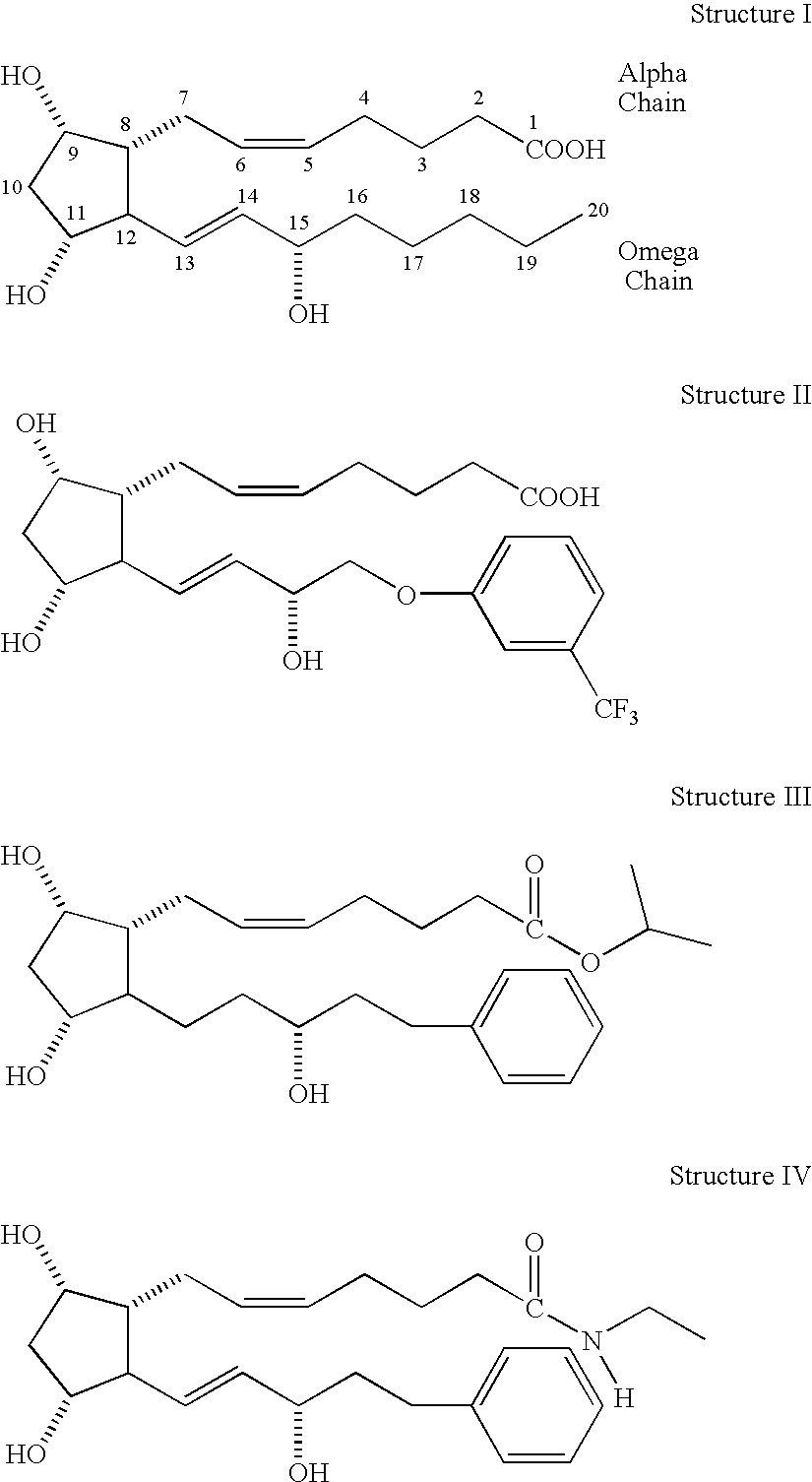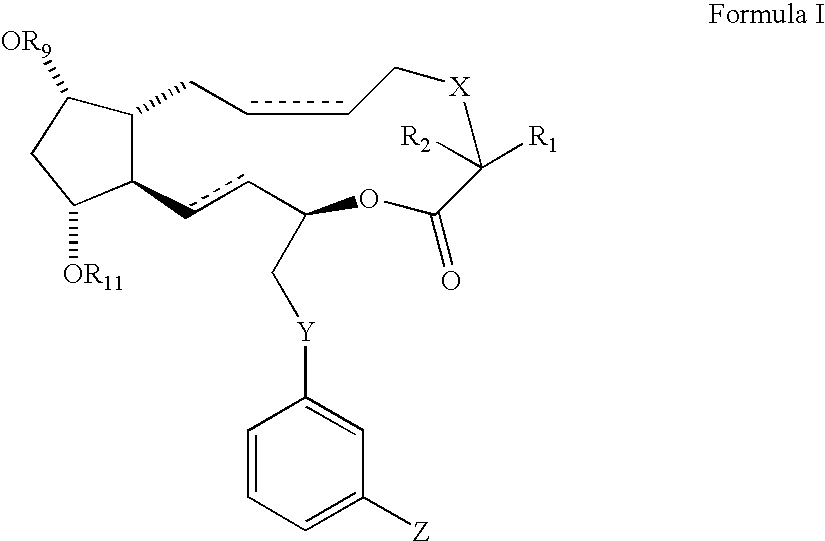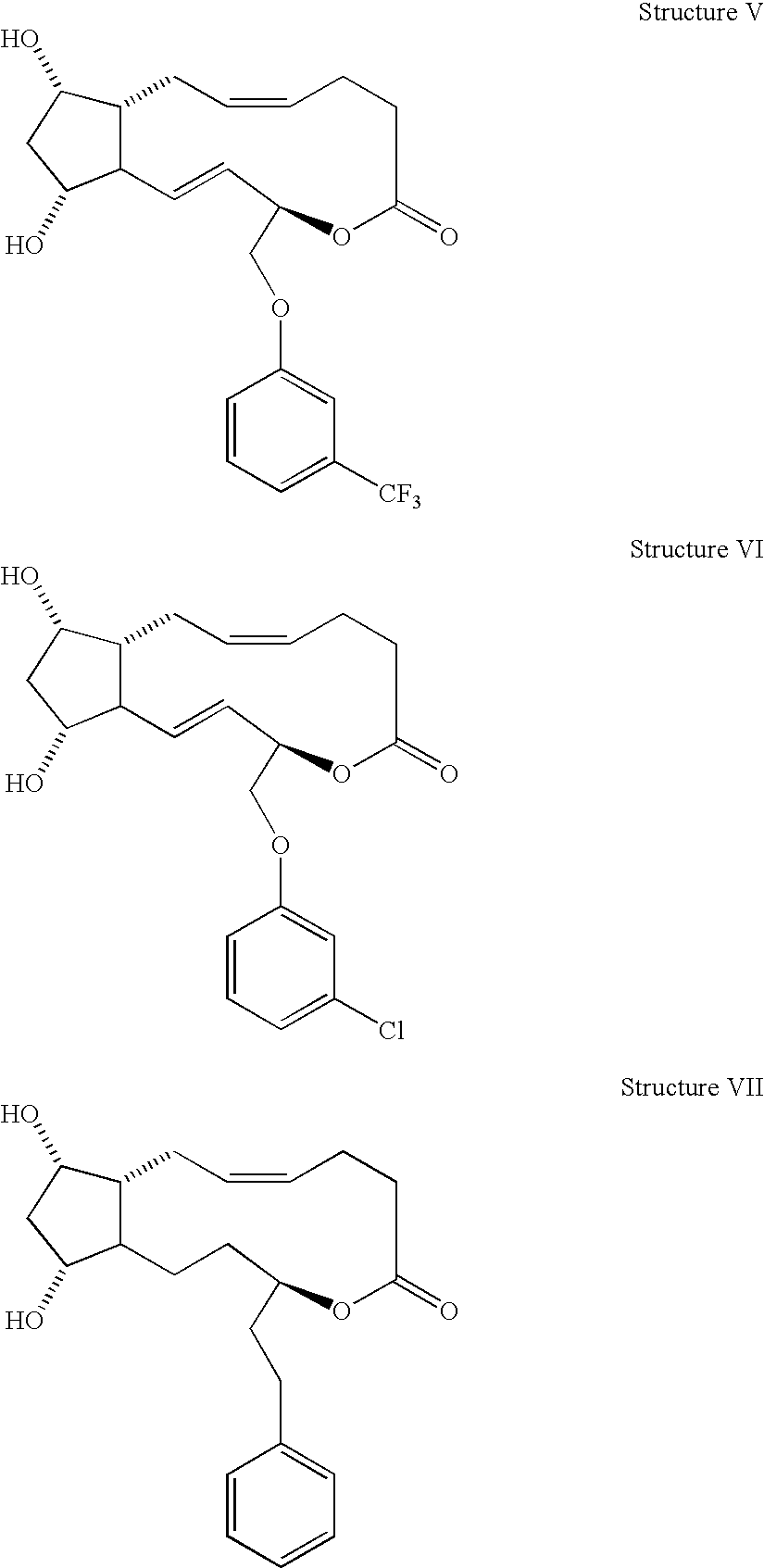Prostaglandin f2alpha analogs and their use in combination with antimicrobial proteins for the treatment of glaucoma and intraocular hypertension
a technology of prostaglandins and antimicrobial proteins, applied in the field of matter compositions, can solve the problems of inflammation and surface irritation of the eye, toxic and irritant, and known synthetic analogs also produce the same undesirable side effects as naturally occurring compounds, so as to increase the viscosity, reduce variability in dispensing formulations, and increase the absorption of active compounds
- Summary
- Abstract
- Description
- Claims
- Application Information
AI Technical Summary
Benefits of technology
Problems solved by technology
Method used
Image
Examples
example 1
[0052]
IngredientAmount (wt %)Fluprostenol 1,15 Lactone0.002Dextran 700.10Hydroxypropyl Methylcellulose0.30Sodium Chloride0.77Potassium Chloride0.12Lactoferrin (human recombinant)0.10HCl and / or NaOHpH = 7.0-7.6Purified Waterq.s. to 100%
example 2
[0053]
IngredientAmount (wt %)13,14-dihydro-17-phenyl-18,19,20-trinor PGF0.004isopropyl esterDextran 700.10Hydroxypropyl Methylcellulose0.30Sodium Chloride0.77Potassium Chloride0.12Lactoferrin (human recombinant)0.10HCl and / or NaOHpH = 7.0-7.6Purified Waterq.s. to 100%
example 3
[0054]
IngredientAmount (wt %)Cloprostenol N-ethyl amide0.02Dextran 700.10Hydroxypropyl Methylcellulose0.30Sodium Chloride0.77Potassium Chloride0.12Lactoferrin (human recombinant)0.10HCl and / or NaOHpH = 7.0-7.6Purified Waterq.s. to 100%
PUM
| Property | Measurement | Unit |
|---|---|---|
| intraocular pressure | aaaaa | aaaaa |
| structures | aaaaa | aaaaa |
| viscous | aaaaa | aaaaa |
Abstract
Description
Claims
Application Information
 Login to View More
Login to View More - R&D
- Intellectual Property
- Life Sciences
- Materials
- Tech Scout
- Unparalleled Data Quality
- Higher Quality Content
- 60% Fewer Hallucinations
Browse by: Latest US Patents, China's latest patents, Technical Efficacy Thesaurus, Application Domain, Technology Topic, Popular Technical Reports.
© 2025 PatSnap. All rights reserved.Legal|Privacy policy|Modern Slavery Act Transparency Statement|Sitemap|About US| Contact US: help@patsnap.com



